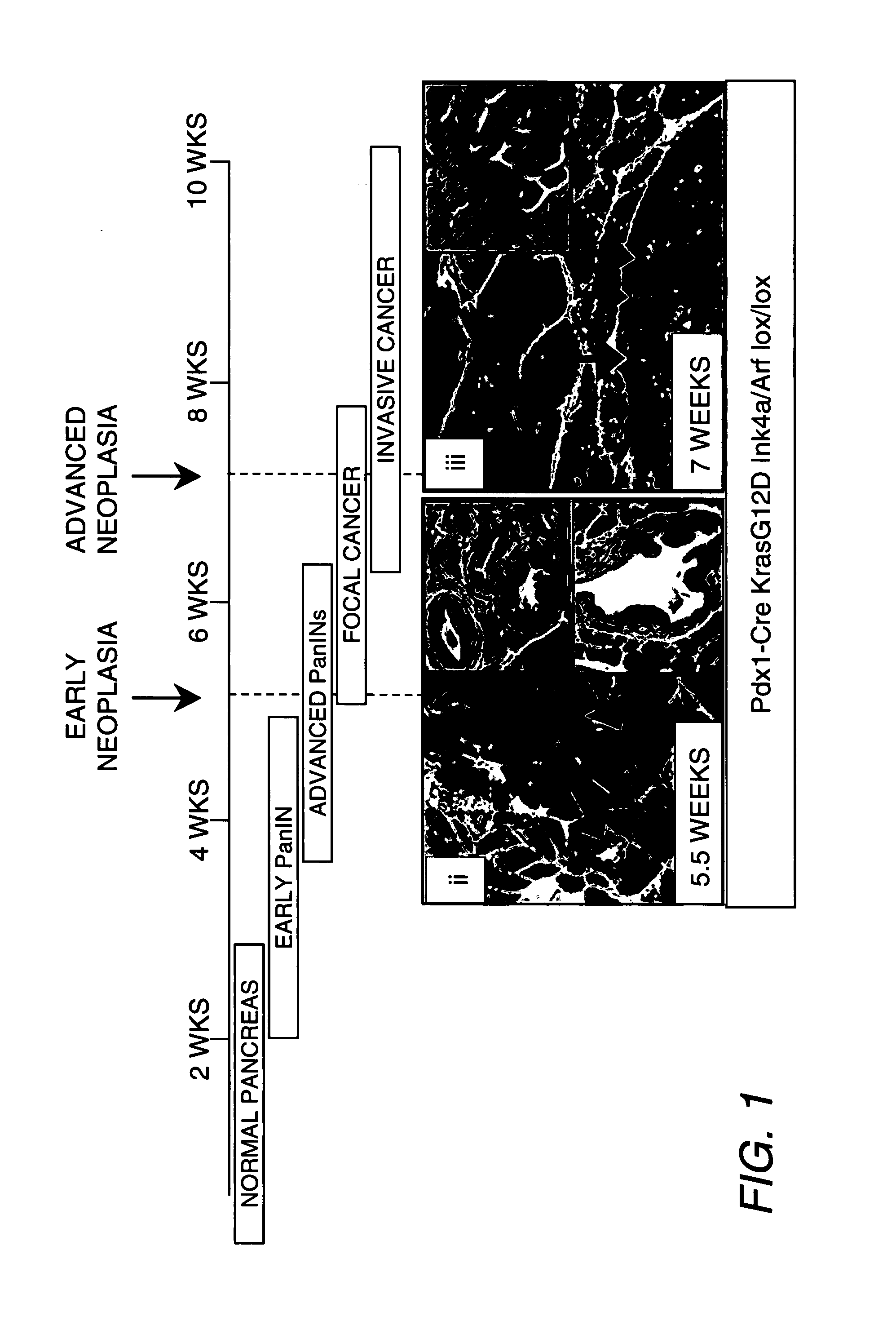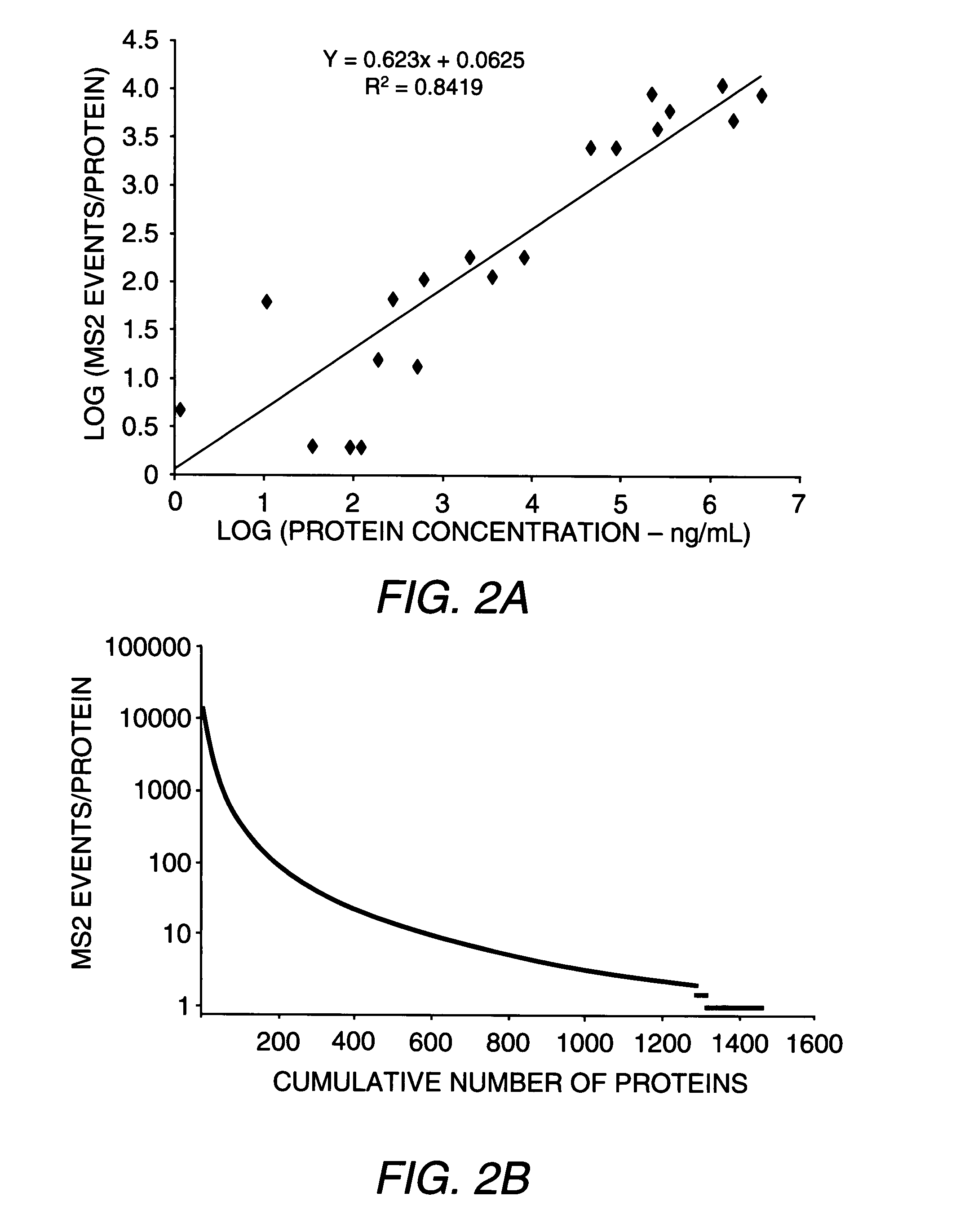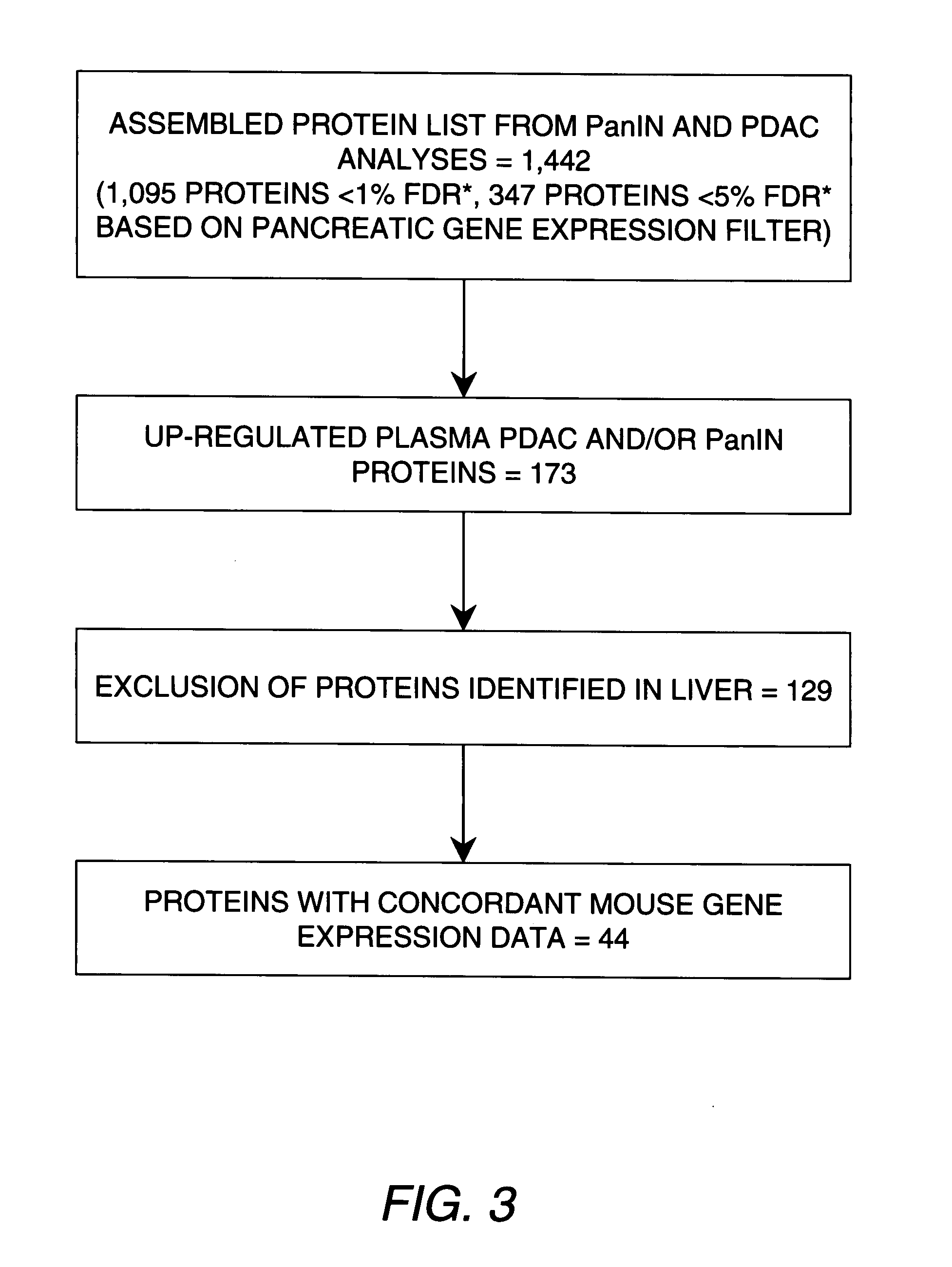Pancreatic cancer biomarkers
a pancreatic cancer and biomarker technology, applied in the field of pancreatic cancer biomarkers, can solve the problems of eluded early detection, large dataset generated, and presented challenges, and achieve the effect of facilitating the earlier diagnosis or detection of pancreatic cancer
- Summary
- Abstract
- Description
- Claims
- Application Information
AI Technical Summary
Benefits of technology
Problems solved by technology
Method used
Image
Examples
example 1
Materials and Methods
[0071]Mice and Plasma Pooling. Pdx1-Cre Ink4a / Arf lox / lox and KrasG12D Ink4a / Arf lox / lox mice (Aguirre, et al. (2003) Genes Dev. 17:3112) were bred and euthanized at 5.5 and 7 weeks, respectively. Mice exhibited a range of PanIN (5.5 weeks), encompassing mainly PanIN-1, and PanIN-2 stages. Only Kras Ink4a / Arf mice presenting granular histopatology, the most common pathology observed in human cases, were used to represent the PDAC (7 weeks) group. Plasma from PanIN and PDAC mice and corresponding controls based on sex and age were pooled for further analysis.
[0072]Sample Immunodepletion and Isotopic Labeling. Plasma pools were immunodepleted of the top three most abundant proteins (Albumin, IgG, and Transferrin). Following immunodepletion, samples were labeled with acrylamide isotopes. PanIN and PDAC plasma pools were combined with their corresponding control plasma pool for further fractionation.
[0073]Protein Fractionation. Immunodepleted and isotope labeled pla...
example 2
Mouse Plasma Analysis
[0076]Plasma was sampled from mice at early and advanced stages of tumor development and from matched controls. Among the early and advanced tumor stages, 1,442 proteins were identified that were distributed across seven orders of magnitude of abundance in plasma. Comparative analysis of candidate biomarkers documented striking concordance of expression in human and mouse pancreatic tissue and in the blood from patients with pancreatic cancer relative to normal specimens. In addition to identifying markers of potential utility for pancreatic cancer diagnosis, the findings presented herein indicate that GEM models of cancer, in combination with proteomics, provide a rich source of candidate markers applicable to human cancer.
[0077]Pancreatic ductal adenocarcinoma (PDAC) is a highly lethal cancer, typically presenting at advanced stages as a disseminated and incurable disease (Hezel, et al. (2006) Genes Dev. 20:1218). PDAC is characterized by activating mutations ...
example 3
Biomarker Candidates
[0083]Acrylamide isotopic labeling of cysteine residues was used to obtain relative quantitative information between disease and control samples. This labeling approach is chemically very efficient as evidenced by lack of unlabeled cysteines in searching mass spectra (Faca (2006) J. Proteome Res. 5:2009). Additionally, this labeling chemistry is fully compatible with the intact protein approach, without significantly affecting protein physical-chemical characteristics. In duplicate experiments performed with independent replicates of samples, there were no proteins that showed quantitative inconsistencies (up-regulated in one experiment and down-regulated in the other). An important aspect of this approach is that identification is not limited to cysteine-containing peptides, thus providing a comprehensive list of peptides in the digests. Among the 626 quantified proteins, 173 were found to be up-regulated in cancer samples (PDAC or PanIN or both) compared to con...
PUM
| Property | Measurement | Unit |
|---|---|---|
| concentration | aaaaa | aaaaa |
| chromatography | aaaaa | aaaaa |
| electrophoresis | aaaaa | aaaaa |
Abstract
Description
Claims
Application Information
 Login to View More
Login to View More - R&D
- Intellectual Property
- Life Sciences
- Materials
- Tech Scout
- Unparalleled Data Quality
- Higher Quality Content
- 60% Fewer Hallucinations
Browse by: Latest US Patents, China's latest patents, Technical Efficacy Thesaurus, Application Domain, Technology Topic, Popular Technical Reports.
© 2025 PatSnap. All rights reserved.Legal|Privacy policy|Modern Slavery Act Transparency Statement|Sitemap|About US| Contact US: help@patsnap.com



